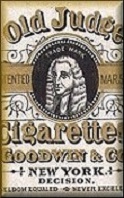 N167
N167
 N172
N172  N173
N173 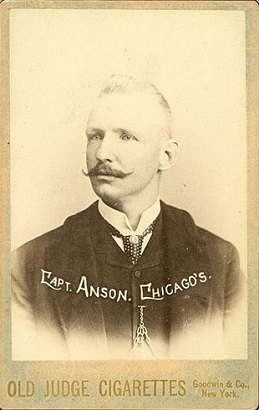

Preface:
This article is a glimpse of the birth of card collecting and the sponsoring tobacco companies. An era in which our classic cards were
created. Mysteries remain for production dates and product distribution for some card issues due to their unrecorded history. No attempt at product values or rarity, condition reports,
population estimates or subjective opinions are noted.
W. Duke Sons and Company was founded after the Civil War in Durham, North Carolina. It was devoted to the production and sale of smoking and chewing tobacco but was an undistinguished competitor to the Durham Company, a neighbor and producer of Bull Durham smoking tobacco - the largest factory in the world. The manufacturing of cigarettes was a cottage industry since its introduction in 1860. In 1880, at the age of 24, James Buchanan "Buck" Duke entered what was then a niche within the tobacco business - hand-rolled cigarettes called the Duke of Durham Cigarettes; he became a competitor of Allen & Ginter, the prevailing leading source. Two years later Duke turned his attention to the nascent cigarette industry and to help finance James Bonsack, inventor of the first viable cigarette-rolling machine; even though other tobacco companies, including Allen & Ginter who earlier offered a reward for a cigarette rolling-machine, rejected the Bonsack contraption as unreliable. This worked to great advantage for Duke; by 1885 the machine was made operational and produced 200 precisely rolled and cut, sanitary cigarettes per minute against an average of four per minute by a skilled hand-roller. Added, Duke received a silent 30% discount on the lease as a reward for his support in developing it. This competitive advantage was a key to Duke's early success.
However, armed with this great productive capacity Duke had exceeded the national demand for cigarettes. He then successfully pursued international markets and expanded the domestic market to sell his product. One of the domestic solutions was to offer a variety of incentives to buy - a select incentive was to insert a picture card into their brand cigarette pack as a premium. In the mid-1880s this inducement was tested primarily by W. Duke Sons and Company and the Allen & Ginter Company. These cards featured actresses, animals, birds, political figures, military, flags and dozens of other subjects. Checklists printed on the back of many of the card series encouraged collecting complete sets. The cards also acted as a stiffener to prevent damage to the cigarettes in the packs.
This concept was an overwhelming success - the nation became addicted to collecting cigarette cards......and to corral many new smokers. Witnessing the appetite the public had for these cards inspired imitation by other tobacco companies. Competition created a demand for the state of the art of photography and advanced lithography needed to produce the most artistically attractive products.
Starting in early 1886, images of professional baseball players were pictured on cigarette cards. The following is a picture history of the 1886-1895 era mother tobacco packages and a sample of the inserted card; only issues that produced major league baseball players are featured. The designations used for these cards are listed in Jefferson Burdick's, The American Card Catalog. Tobacco packages of this era are extremely scarce and those that are found are inevitably in poor condition, not in the photo-shop enhanced condition shown below. The tobacco products displayed here are approximately their actual sizes in most cases. In nearly all cases these packages are much rarer than the associated cards.

In 1886 the Goodwin & Company issued their first insert baseball cards; these were the N167 portrait cards of New York National League baseball players into their Old Judge brand cigarette packs. From 1887 to 1890 the sepia photo-type N172 card was issued, they became the largest issue of cards ever. This pack also carried the coupon for the N173 cabinet and the coupon for the colorful albums.
 N167
N167
 N172
N172  N173
N173 

Shown below is a Goodwin & Company Counter Top Gypsy Queen Display Box that contained Gypsy Queen Cigarette Packs with the inserted small 1887 N175 Cards. There is no validation as to how the large N175 cards were distributed.
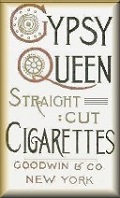 N175
N175 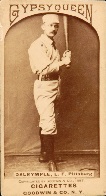
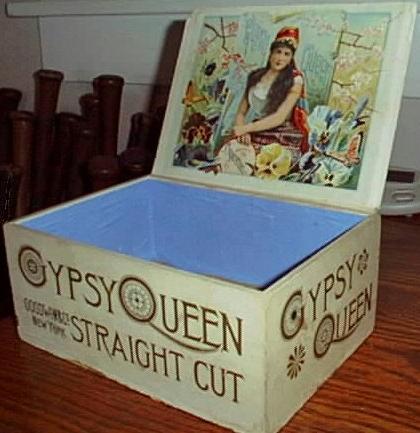
 N175 Large
N175 Large Shown below is the redesigned product graphic change that was introduced in 1888 by Goodwin & Company for their Counter Top Gypsy Queen Display Box and the Gypsy Queen Cigarette Packs that carried the N162 Cards.

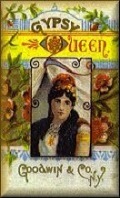 N162
N162
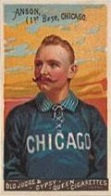
The Allen & Ginter Company, who had been producing advertising cards, made a promotional decision in the spring of 1888 to produce and insert the N28 lithograph cards of World Champions into their Richmond brand 10-cigarette packs. Later in 1888 the N29, a second series, succeeded the N28 also the N43 cards were introduced as an insert for their 20-cigarette pack. The N43 card is an enhanced version of the N29 card that shows a slightly reduced inset of the player with related baseball theme artwork in the background.
 N28
N28
 N29
N29
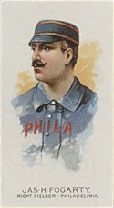
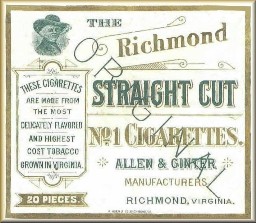 N43
N43 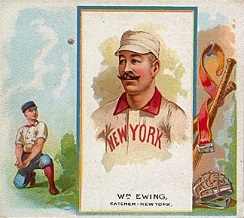
|
The following tobacco companies joined the trend by inserting baseball cards with their products. Each competitor had their own baseball card format. |
The Charles Gross & Company inserted the N690 and N690-1 cards in their Kalamazoo Bats Box from 1886 to 1888. In 1887 the N693 Kalamazoo Bats Team Cards were made available but there is no cogent evidence as to how they were distributed. There are only six unnumbered cards listed in the N693 Team Set.
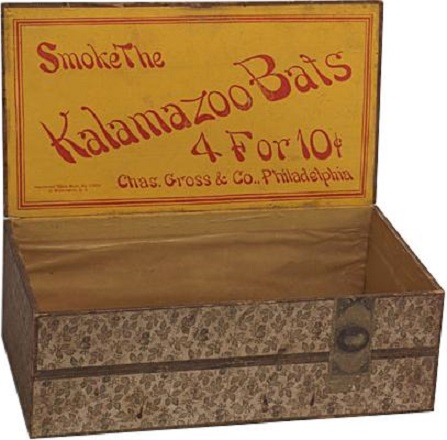
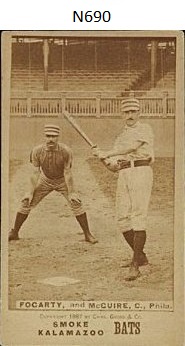
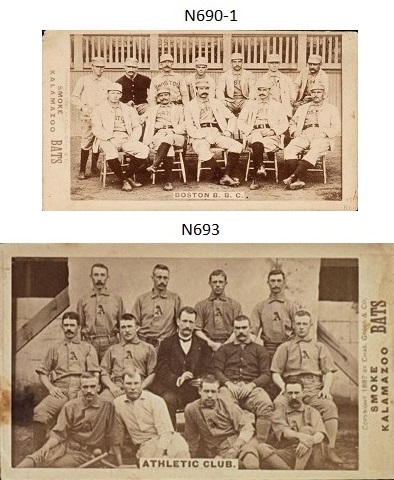
The Four Base Hits Cards are listed as type 2 N690 but share no identity to a Charles Gross Co. product. It is possible, due to the similar
artistic style, that these cards were produced by The August Beck Company. No tobacco package that carried these cards is known to exist. There is some indication that the
packaging used on the these cards would resemble the Kalamazoo Bats sales box. One card from this set is shown for identification.
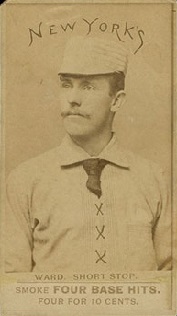
The Lone Jack Cigarette Company initiated inserting their version of baseball cards, the N370s, in their packs in 1887. There are 13 St. Louis Browns players included in this series.
 N370
N370
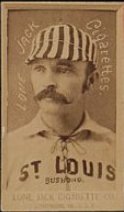
No package that carried these baseball cards is known to exist. Shown below is a photo-shop enhanced image of a Gold Coin Chewing Tobacco Pack taken from an advertising sign. Though there is no direct evidence, the image shown below is likely to be the same pack that was used to insert their 1887 N284 Base Ball Player Cards.
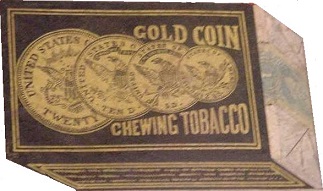 N284
N284 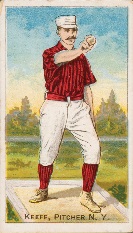
The W.S. Kimball & Company commenced inserting N184 cards into their High Grade and Little Jockey cigarette packs in 1888. Of this set of 50 cards only four are baseball players.
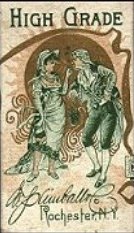
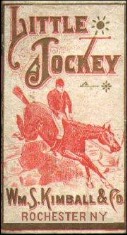 N184
N184
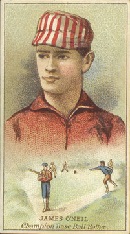
In 1888 the S.F. Hess & Company produced California League baseball cards (N321 & N338-1), Newsboy League cards (N333) and Major League baseball cards (N338-2) as inserts for their Creole Cigarette packs.
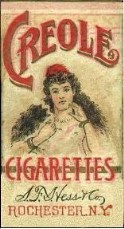 N338-2
N338-2

The August Beck & Company commenced inserting N403 cards in their Yum Yum tins in 1888. This card set is unique in that it was produced in two distinct types: photographic portraits and full-length action drawings.
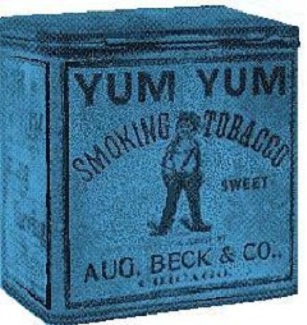 N403
N403
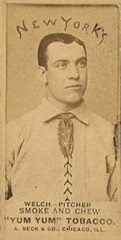
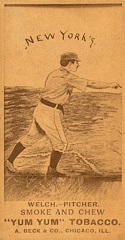
The first gum company to insert cards with their product. The Green and Blackwell Company produced the E223 G&B Chewing Gum Card in 1888. No package that carried these baseball cards is known to exist. One card from this set is shown for identification.

The P. H. Mayo & Bros. Tobacco Company commenced inserting N300 cards in their tobacco tins in 1895.
 N300
N300
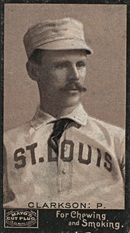
Any 19th century unopened cigarette packs are extremely rare. In 1998 a collection of three unopened Old Judge Cigarette packs was found and opened. Each contained a "common" player N172 card. The cards were graded by SGC Grading Service. Two were graded mint and the third near mint. One of those cards is shown here:
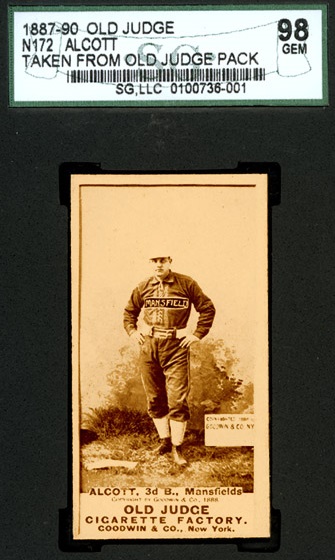
The practice of insert cards all but stopped when competition ended. In January of 1890, Buck Duke chartered the American Tobacco Company in New Jersey. With his vast competitive advantage, coupled with slashing prices and greatly expanding advertising spending, Duke captured 40% of the cigarette market and threatened to bankrupt his competitors. One by one they succumbed to acquisition. When the war ended, all the principle tobacco companies united with Duke in order to survive and became its' founding members. The five constituent companies of the new American Tobacco Company: W. Duke & Sons, Allen & Ginter, W.S. Kimball, Kinney Tobacco, and Goodwin produced 90% of the cigarettes made in 1890, the first year the American Tobacco Company was listed on the NYSE. Shortly after the consolidation, ATC successfully negociated a new contract with the Bonsack Machine Company for the exclusive use and control of the Bonsack cigarette-rolling machine in the United States.
By the end of the century, S. Anargyros & Co., D. Buchner & Company, P. H. Mayo & Bros. Tobacco Company, Liggett & Myers Company, including the noted - Durham Company - also smaller firms, many forced out of business, fell and were placed under the control of the American Tobacco Company. P. Lorillard and R. J. Reynolds also became ATC subsidiaries but were maintained as separate entities intentionally to keep the allusion that there was more competition in the marketplace. The ATC was headquartered, along with processing plants and warehouses, in Durham, North Carolina. Commercial facilities were also built in New York.
In 1907 President Theodore Roosevelt led the antitrust action that was brought against the ATC. In 1911 the Supreme Court handed down an historic verdict ordering the dissolution of the Buck Duke's $240 million-a-year American Tobacco Company monopoly, which the court deemed in violation of the Sherman Antitrust Act. Duke's American Tobacco Co. controlled 92% of the world's tobacco business.
The major companies to emerge were:
American Tobacco: Pall Mall, Sweet Caporal, Hassan, Mecca, Omar
Liggett & Myers: Piedmont, Fatima, American Beauty, Home Run, Imperiales, Coupon, King Bee
P. Lorillard: Helmar, Egyptian Deities, Turkish Trophies, Murad, Mogul, Zubelda
R. J. Reynolds: 20 per cent of the plug and pipe trade - no cigarette brands but several small cigar and cigarette companies.